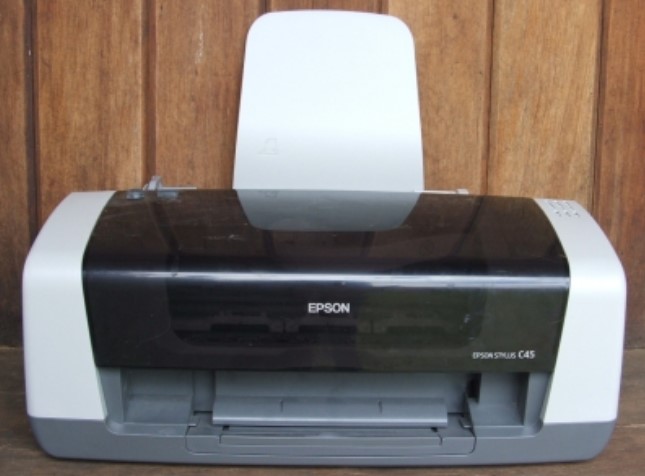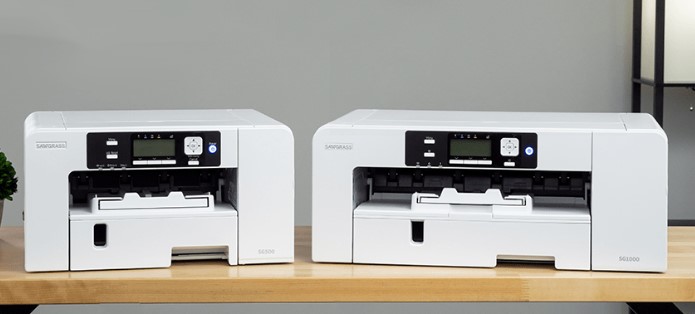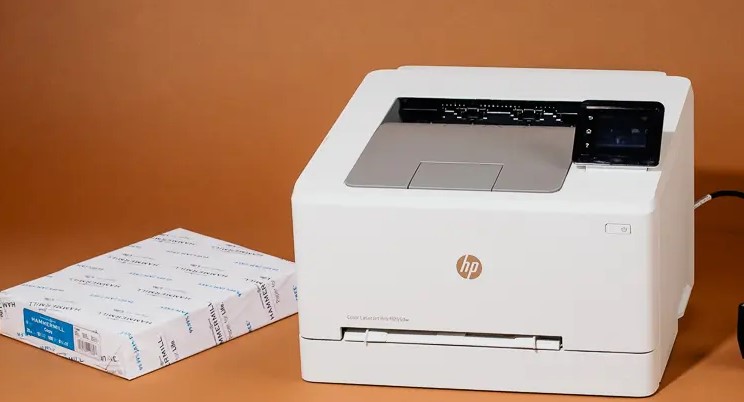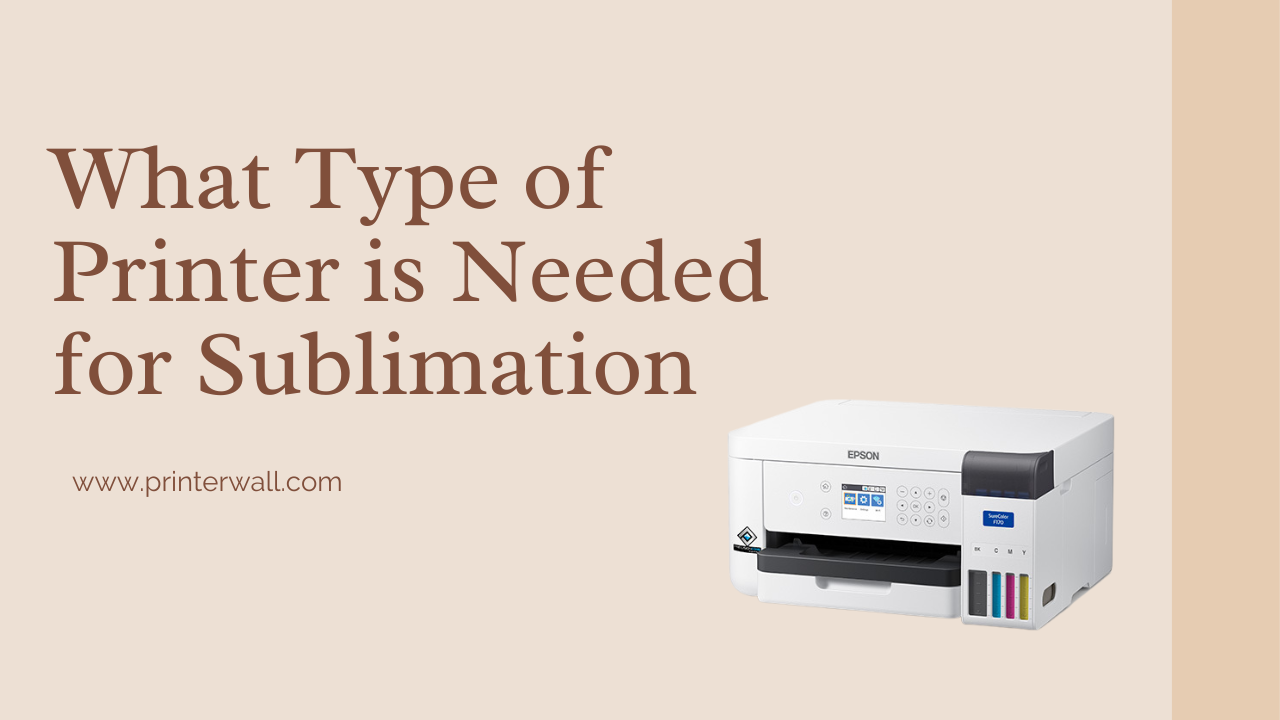When it comes to printing high-quality images, sublimation printing is a popular choice. But what type of printer is needed to achieve this result? In this article, we’ll discuss the key features that you should look for in a printer when considering sublimation printing. We’ll also provide an overview of the most common types of printers that are used for this purpose. By the end, you’ll have a better idea of which printer is right for your needs.
An Overview of Different Types of Printers
Printers are a fixture of modern life, used in the home, in the office, and in many other settings. There are many different types of printers available, each with its own unique features and capabilities.
Inkjet printers are the most popular type of printer available, and are generally the most affordable. They use ink cartridges to create images on paper and are suitable for printing documents, photographs, and graphics.
Laser printers are more expensive than inkjet printers but are capable of printing at higher speeds and with greater accuracy. They use a toner cartridge and use a laser to apply the image to the page. Laser printers are great for printing text documents and large graphics.
3D printers are the newest type of printer on the market and are used to create physical objects from a digital file. They have the ability to create complex shapes and are becoming increasingly popular in areas such as manufacturing and engineering.
Label printers are designed specifically to print labels on adhesive media. They use a variety of printing technologies, including thermal transfer and direct thermal, and are used in applications such as barcode labels and shipping labels.
All-in-one printers are a convenient option for those who need to print, scan, and copy documents. They offer the convenience of combining several devices into one, and are often more affordable than buying each device separately.
Dot matrix printers are used primarily for printing forms and reports. They are generally slower than other types of printers and are used in applications where speed is not a priority.
Photo printers are designed specifically for printing photographs. They produce higher-quality prints than traditional inkjet or laser printers, and are often used by professionals and enthusiasts.
Different Types of Sublimation Printers
Inkjet Printers
Inkjet printers are one of the most popular types of printers available today due to their affordability and ease of use. They use a process of spraying tiny droplets of ink onto the paper to produce an image. This type of printer is ideal for home and small office use, as they are relatively inexpensive and are relatively easy to use.

Pros of Inkjet Printers
The main advantages of inkjet printers are their low cost, convenience, and versatility. They are much cheaper than laser printers and can produce high-quality prints for a fraction of the cost. They are also easy to use and maintain, and can handle a variety of media types such as glossy paper, cardstock, and transparencies. Inkjet printers also have a wide array of features, such as the ability to print directly from memory cards, camera phones, and other devices, and the ability to print directly from the internet.
Cons of Inkjet Printers
The main disadvantage of inkjet printers is that they are not as reliable as laser printers. Inkjet printers are prone to clogging, and the ink can dry out quickly, leading to fading and smudging. They also tend to be slower than laser printers, and the ink can be expensive to replace. Additionally, inkjet printers can be more prone to errors, and they often require frequent maintenance.
Dye-Sublimation Printers
Dye-sublimation printers are a type of printer that uses heat to transfer dye onto materials such as paper, fabric, or plastic. It is a popular printing technology as it produces high-quality prints in vivid colors with great detail. These printers are used for a variety of printing applications, from digital photos to t-shirts and banners.

Pros of Dye-Sublimation Printers
One of the main advantages of dye-sublimation printers is the superior quality of prints that they produce. The colors are vivid, the detail is sharp, and the printing lasts for a long time without fading or discoloration. Additionally, dye-sublimation printers are capable of printing on a variety of materials, including paper, fabric, and plastic. This makes them ideal for printing t-shirts, banners, and other items. Finally, these printers are very easy to use, with minimal setup and maintenance required.
Cons of Dye-Sublimation Printers
The main drawback of dye-sublimation printers is their cost. These printers are usually more expensive than other types of printers, making them inaccessible to some users. Additionally, the materials used in dye-sublimation printing can be expensive, further increasing the cost of printing. Finally, these printers tend to be slower than other types of printers, which may be an issue for users who need to print large quantities quickly.
Laser Printers
Laser printers are a type of high-end, high-performance printer that uses a laser beam to create an image on the page. They are most commonly used in office and business settings, but are becoming increasingly popular for home use as well. Laser printers offer fast print speeds, high resolution, and are generally more reliable than other types of printers.

Pros of Laser Printers
The primary advantage of a laser printer is its speed. Laser printers can print at speeds up to 50 pages per minute, far faster than inkjet printers. Laser printers also have a higher resolution than inkjet printers, producing sharper images and text. They are also more reliable and require less maintenance than other types of printers. Laser printers also tend to be more cost-effective over time than inkjet printers, as they require less frequent replacement of toner cartridges.
Cons of Laser Printers
One of the main disadvantages of a laser printer is its initial cost. Laser printers are more expensive than inkjet printers, and the cost of replacement toner cartridges can add up quickly. Laser printers also tend to be more noisy than inkjet printers. Additionally, laser printers are not well-suited to printing photos, as they cannot produce the same level of color and detail as an inkjet printer.
Choosing the Right Sublimation Printer
When selecting a printer for sublimation projects, there are a few important factors to consider. First and foremost is to choose a printer that is specifically designed for sublimation printing. Not all printers are capable of achieving the high-quality results that are needed for sublimation projects. Additionally, you should consider the size of the projects you plan to work on. Some printers are designed to work with larger print jobs, while others are better suited for smaller projects. You should also consider the cost of the printer and its consumables, such as ink and paper.
Types of Sublimation Projects
Sublimation projects range from t-shirts and mugs to phone cases and mousepads. Sublimation printing allows for vibrant colors and crisp details, making it perfect for creating unique, one-of-a-kind designs. It can also be used to produce high-quality prints on a variety of materials, such as paper, fabric, metal, and plastic.
Choosing the Right Printer
Once you have determined the type of projects you plan to work on and the features you need, you can begin to narrow down your choices to find the right printer for you. It is important to take your time and research the different printers available, considering factors such as cost, quality, and speed.
Additionally, if you are looking for a specific style or size of printer, you should make sure to check that the model you select is compatible with the materials you plan to work with. Additionally, you should read customer reviews to gauge the quality of the printer and its customer service. Ultimately, choosing the right printer for your sublimation projects will help ensure that you are producing high-quality prints.
Conclusion
Overall, sublimation printing is an innovative and effective way to create beautiful, vibrant prints. It is a great option for businesses, crafters, and other individuals who are looking for a way to create unique and personalized prints. Sublimation printers are specifically designed for this type of printing, and although they may be more expensive than other types of printers, they offer a higher quality result. When choosing a sublimation printer, it is important to consider the type of material you will be printing on, as well as the size of the prints you will be producing. With the right printer, sublimation printing can be a great way to create stunning prints with ease.
Also Read: Why is My Sublimation Ink Dull
Frequently Asked Questions
What is sublimation printing?
Sublimation printing is a printing technique that uses heat to transfer dye onto a variety of materials, including fabric, paper, plastic, and metal.
What type of printer is needed for sublimation?
A sublimation printer, also known as a dye-sublimation printer, is needed for sublimation printing. Sublimation printers use special inks that are heated to high temperatures and then transferred to the material.
Can I use a regular inkjet printer for sublimation printing?
No, regular inkjet printers will not work for sublimation printing. Sublimation printing requires a special type of printer and special inks.
Are there any advantages of using a sublimation printer?
Yes, sublimation printing allows for vibrant, high-quality prints with vivid colors and sharp details. Additionally, the prints are resistant to fading and abrasion.
What types of materials can I use with a sublimation printer?
Sublimation printers can be used with a variety of materials, including fabric, paper, plastic, and metal.
